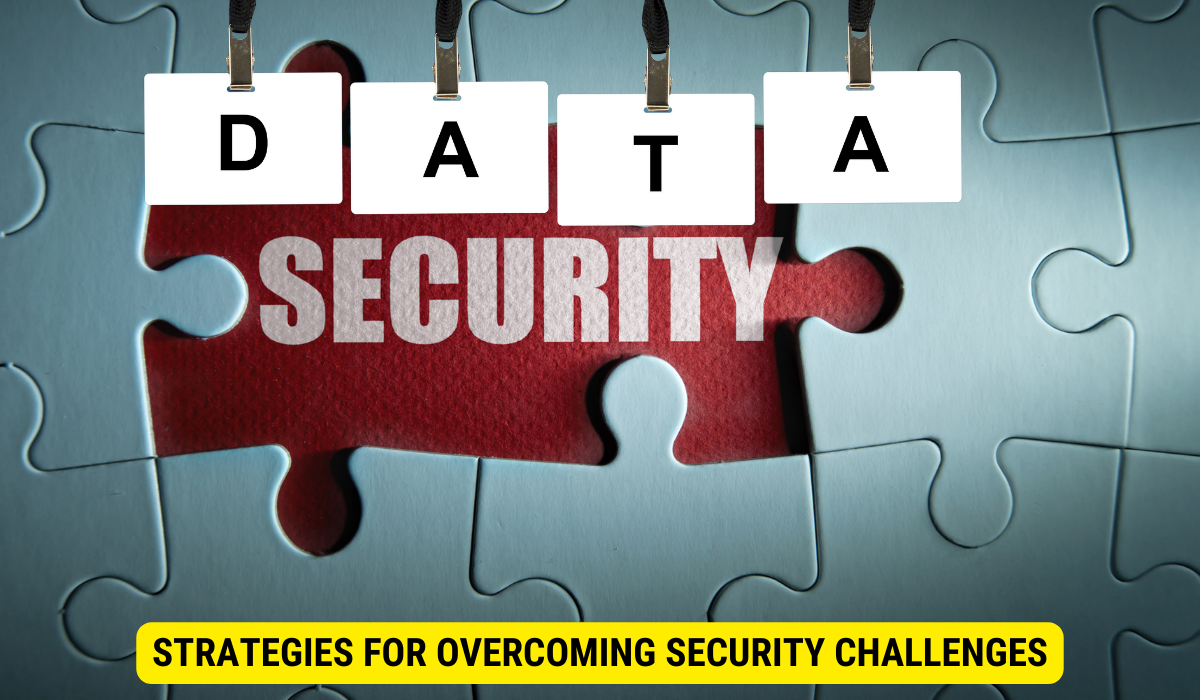To ensure the security of data on private networks, follow these three crucial steps:
-
Implement robust authentication measures.
-
Regularly update and patch network systems.
-
Establish a comprehensive backup strategy.
In today’s digital world, data security on private networks has become a critical concern for individuals and organizations. With cyber threats becoming increasingly sophisticated, it is vital to implement robust security measures to safeguard valuable data. I will discuss three important steps that can help ensure data security on private networks.
Understanding the Importance of Data Security in Private Networks
Before diving into the specific steps, it is essential to understand why data security should be a top priority. Private networks store sensitive information, such as personal data, financial records, and business secrets. A breach in network security can lead to financial loss, reputation damage, and legal consequences. Therefore, investing in data security measures is a proactive approach to protect valuable assets.
Data security is not just a matter of protecting information; it is also about safeguarding the trust and confidence of customers and clients. In today’s digital age, where data breaches are becoming increasingly common, individuals and businesses must prioritize the security of their private networks.
The Rising Threat to Private Network Security

In recent years, the threat landscape has evolved significantly, with cybercriminals employing sophisticated techniques to exploit vulnerabilities in private networks. Malware, phishing attacks, and ransomware have become common tactics to breach network security defenses. Awareness of these threats and taking appropriate steps to mitigate them is crucial.
One of the most concerning aspects of the rising threat to private network security is the increasing sophistication displayed by cyber criminals. They constantly adapt and evolve their tactics to bypass security measures and gain unauthorized entree to sensitive data. This constant cat-and-mouse game requires individuals and businesses to stay vigilant and update their security protocols regularly.
Why Data Security Should Be Your Top Priority
The consequences of a data breach can be disturbing. Apart from financial repercussions and legal issues, the trust of customers and clients also takes a severe hit. When sensitive information is compromised, individuals may become victims of identity theft, leading to long-term financial and emotional distress. For businesses, a data breach can result in losing valuable intellectual property, competitive advantage, and customer loyalty.
Furthermore, data breaches can have far-reaching consequences beyond immediate financial losses. They can tarnish a company’s reputation, losing trust from stakeholders, partners, and the general public. Rebuilding trust and recovering from a data breach can be long and arduous, often requiring significant investments in security measures and public relations efforts.
To keep a competitive edge in today’s market, ensuring data security should be a top priority for individuals and businesses. Organizations can significantly decrease the risk of a data breach by implementing robust security measures, regularly updating software and hardware, and educating employees about potential threats.
In conclusion, data security is not just a technical concern; it is a critical aspect of protecting the interests of individuals and businesses. By understanding the importance of data security, staying informed about emerging threats, and taking proactive steps to safeguard private networks, we can create a safer digital environment for everyone.
Step 1: Implementing Robust Authentication Measures
Authentication is the first line of defense in network security. Implementing robust authentication measures helps ensure that only authorized individuals can access the private network.
When it comes to network security, passwords play a crucial role. They are the most common form of authentication used to verify the identity of users. However, passwords are often the weakest link in network security. Many individuals use weak and easily guessable passwords, making it easier for attackers to improvement unauthorized access.
To strengthen the security of your network, it is important to use strong, unique passwords. A strong password typically combines uppercase and lowercase letters, numbers, and special characters. Using such passwords makes it significantly harder for attackers to crack them through brute-force attacks.
In addition to using strong passwords, implementing policies to enforce regular password changes can further enhance security. Regularly changing passwords reduces the risk of compromised credentials being used to gain unauthorized entree to the network. Setting a password expiration period is recommended, prompting users to change their passwords accordingly.
The Role of Passwords in Network Security

Passwords are the most common form of authentication. However, they are often the weakest link in network security. It is important to use strong, unique passwords that are not easily guessable. Additionally, implementing policies to enforce regular password changes can enhance security.
Furthermore, it is crucial to educate users about the importance of password security. Many people reuse passwords across multiple accounts, which can be extremely risky. If one account gets cooperated, all other accounts using the same password become vulnerable. Encouraging users to use different passwords for different accounts can significantly reduce the impact of a potential security breach.
Moreover, implementing multi-factor authentication (MFA) can provide an extra layer of security. MFA needs users to provide two or more authentication factors to verify their identity. This can include something they know (password), something they have (a physical token or mobile device), or something they are (biometric data). By combining multiple factors, MFA adds a barrier for attackers, making it much more difficult to gain unauthorized access.
Two-Factor Authentication: An Extra Layer of Security
Two-factor authentication (2FA) delivers an additional layer of security by requiring users to deliver two different authentication factors, such as a password and a unique code sent to their mobile device. This adds an extra barrier for attackers, significantly reducing the risk of unauthorized access.
One common method of implementing 2FA is using one-time passwords (OTPs). These passwords are generated for a single use and are typically time-limited. When operators attempt to log in, they receive an OTP via SMS or an authenticator app. They must enter this OTP and their password to complete the authentication process. This ensures that even if an attacker obtains the user’s password, they still need access to the user’s mobile device to obtain the OTP and gain entry.
Another form of 2FA is biometric authentication, which uses single physical or behavioral characteristics to verify a user’s identity. This can include fingerprint scans, facial recognition, or even voice recognition. Biometric verification adds an extra layer of security as these characteristics are difficult to replicate, making it much harder for attackers to mimic legitimate users.
By implementing two-factor authentication, organizations can significantly enhance the security of their network. It provides additional protection against various attacks, such as password guessing, phishing, and credential theft. With 2FA in place, even if an attacker obtains a user’s password, they would still need the second authentication factor to gain access, making it highly unlikely for unauthorized individuals to penetrate the network.
Step 2: Regularly Updating and Patching Network Systems
Regularly updating and patching network systems is crucial to maintain the security of private networks. Software informs often contain critical security patches that address known vulnerabilities.
The Importance of Regular System Updates
System updates not only add new features but also fix security vulnerabilities. These vulnerabilities are often discovered by security researchers or exposed through cyber attacks. Regular updates ensure that network systems are equipped with the latest security enhancements.
Patching: A Critical Component of Network Security
Patching refers to applying software updates to fix vulnerabilities or bugs. It is important to promptly patch network systems to prevent attackers from exploiting known vulnerabilities. Delaying patches increases the risk of a successful cyber attack.
Step 3: Establishing a Comprehensive Backup Strategy
A comprehensive backup strategy is vital for data security. It ensures that data can be recovered even if a breach occurs without significant loss or downtime.
The Role of Backups in Data Security
Regular backups create a copy of critical data, defending it from data loss due to hardware disappointment, accidental deletion, or malicious attacks. Holdups should be stored in a secure location, such as an off-site facility or cloud storage, to ensure their availability in case of a physical disaster.
Key Considerations in Developing a Backup Strategy
When developing a backup strategy, factors such as data retention periods, frequency of backups, and the type of backup (full, incremental, or differential) need to be considered. A robust backup strategy should be scalable, regularly tested, and include mechanisms for monitoring and verifying the integrity of backups.
Overcoming Challenges in Ensuring Private Network Security
Ensuring network security can be challenging due to various factors. However, with proper planning and implementation, these challenges can be overcome to achieve high data security.
Common Obstacles in Network Security Implementation
Some common obstacles in network security implementation include budget constraints, lack of awareness, and employee resistance to change. Overcoming these obstacles requires a comprehensive approach, including education, effective communication, and stakeholder collaboration.
Strategies for Overcoming Security Challenges

To overcome security challenges, organizations can prioritize security investment, adopt a proactive approach to threat detection, and establish clear security policies and procedures. Regular training and employee awareness programs can also help create a security-conscious culture.
Key Takeaways
- Robust authentication, including strong passwords and two-factor authentication, can significantly deter unauthorized access.
- Keeping software and network systems up-to-date protects the network from vulnerabilities that cybercriminals may exploit.
- A regular and secure backup strategy ensures data safety and quick recovery in case of data breaches or system failures.
- Consistent training and awareness programs can foster a security-conscious organizational culture.
- Addressing and overcoming potential challenges like budget limitations or resistance to change can lead to effective security implementation.
FAQs
Why is implementing robust authentication measures essential for private network security?
It is the first defense against unauthorized access, confirming only authorized users can access the network.
How do regular updates and patching enhance network security?
They include critical security patches that address known vulnerabilities, reducing the risk of cyberattacks exploiting these weaknesses.
Why is a comprehensive backup strategy crucial for data security?
It ensures data recovery in case of breaches, hardware failures, or accidental deletions, minimizing data loss or downtime.
How can two-factor authentication (2FA) bolster network security?
2FA requires a second verification step, such as an OTP or biometric authentication, adding an extra barrier against unauthorized access.
What are the potential challenges in implementing these security measures?
Common challenges include budget constraints, lack of awareness, and resistance from employees to new security procedures.
Conclusion
Data security on private networks is paramount in today’s digital age. By focusing on rigorous authentication, frequent system updates, and an all-inclusive backup strategy, individuals and organizations can create a fortified defense against evolving cyber threats.
